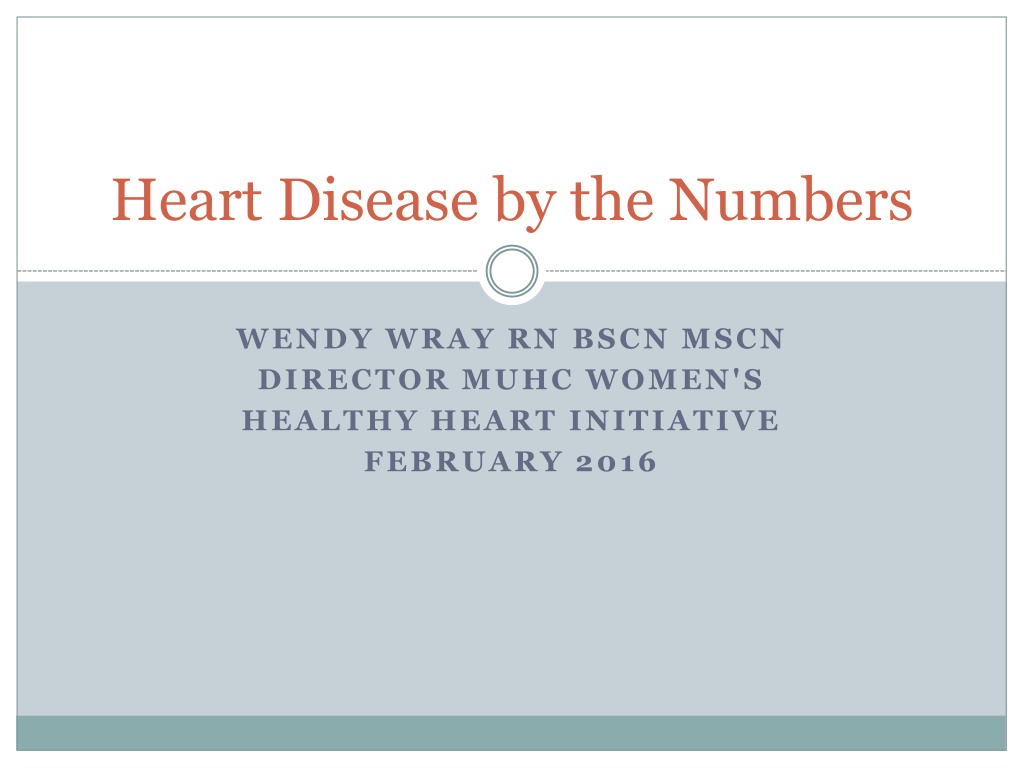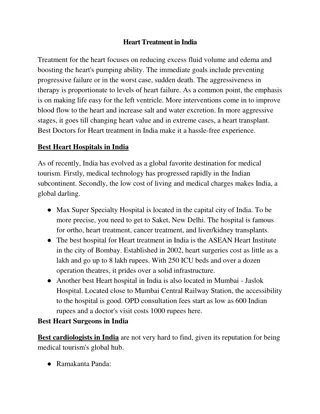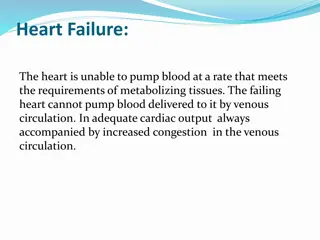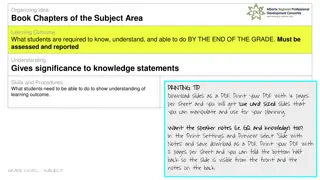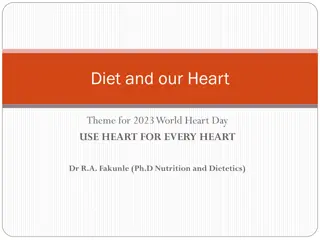Understanding Heart Disease: Key Numbers and Factors
Explore essential numbers and factors related to heart disease, including blood pressure, cholesterol levels, diabetes, BMI, alcohol consumption, age, family history, and smoking. Learn about the risks, measurements, lifestyle considerations, and case studies that shed light on heart health. Stay informed to protect your heart's well-being.
Download Presentation

Please find below an Image/Link to download the presentation.
The content on the website is provided AS IS for your information and personal use only. It may not be sold, licensed, or shared on other websites without obtaining consent from the author. Download presentation by click this link. If you encounter any issues during the download, it is possible that the publisher has removed the file from their server.
E N D
Presentation Transcript
Heart Disease by the Numbers WENDY WRAY RN BSCN MSCN DIRECTOR MUHC WOMEN'S HEALTHY HEART INITIATIVE FEBRUARY 2016
Important Numbers Blood pressure Cholesterol Diabetes BMI; Alcohol Age; Family History ; Smoking Waist circumference Physical Activity
Blood Pressure Normal values- 140/80; 130/70 High Blood pressure risks- stroke, heart failure Silent killer Accurate measurement challenging Lifestyle- salt, physical activity, alcohol, weight loss SPRINT study- 2015- 120/80- stay tuned
Cholesterol Total cholesterol ( TC): calculated using the following equation: HDL + LDL + 20 percent of your triglyceride level. 5.1 mmol/l -desirable - 6.2 high Triglycerides ( TG): the most common type of fat in the body. < 1.50 desirable >1.50 elevated High Density Lipoprotein (HDL) good chol.-higher levels are better; HDL removes excess cholesterol from cells Genetic factors, type 2 diabetes, smoking, being overweight and being sedentary can all result in lower HDL cholesterol. <1.03mmol/l major risk 1.5 or > protective
Cholesterol contd Low density Lipoprotein (LDL-C) bad chol.-low LDL cholesterol level is considered good for your heart health; a diet high in saturated and trans fats raises LDL cholesterol. 2.5mmol/l optimal 4.1 -4.8 high apoA: is the main protein component in HDL. 1.20-2.28 g/l apoB : is the main protein constituent of lipoproteins such as very low-density lipoprotein (VLDL) and low- density lipoprotein (LDL) . 0.80-1.20 g/l >1.20 high
Diabetes Random sugar- 3.9-11.0 AC sugar PC sugar HGBA1C- normal is 6.0 or less: Diabetes- 6.5+ 50% higher risk of heart disease Worse in women Type 11- diet and physical activity
Case Study 60 y.o .woman Non-smoker, diabetic, BMI- 27; no family history TC- 6.2; TG- 0.50;HDL- 2.00;LDL-C- 3.6;apoB-1.10
BMI and Alcohol Body Mass Index- weight in kg. x height M2 Normal- 18.5-24.9; overweight- 25-29.9 obesity- >30 Muscle versus fat Alcohol- empty calories; sugar women- 1 , men- 2
Age, Family History and Smoking 50 years of age- heart disease develops over time Prevention requires earlier start- proactive prevention vs reactive disease oriented approach Premature Family History- women- <60; men- 50 s Smoking- Zero- more potent risk in women Vaping- long term effects; stepping stone to quitting
Waist Circumference Normal: men- 40 ; women- 35 Tape measure Abdominal obesity- adipose tissue, visceral fat Secretes hormones acts like a organ
Physical Activity 150 minutes per week or more; personal preference Aerobic, muscle strengthening and resistance combo Sitting is the new smoking move at least hourly Any physical activity is better than no physical activity
Making Change Creating new behaviors is a process 6 months to create a new habit Cheating is probably part of success- realistic expectations- 80/20 The Art of Negotiation
Take Home Message Become more engaged in your heart knowledge Numbers Count!! AHA 2016- women are underdiagnosed and undertreated. Heart disease is largely a preventive disease. Be a friend- Tell a friend !
Resources www.whhionline.ca - Facebook Wear Red Day- February HeartBeat event 2017 Red Dress Campaign- Heart and Stroke Foundation
